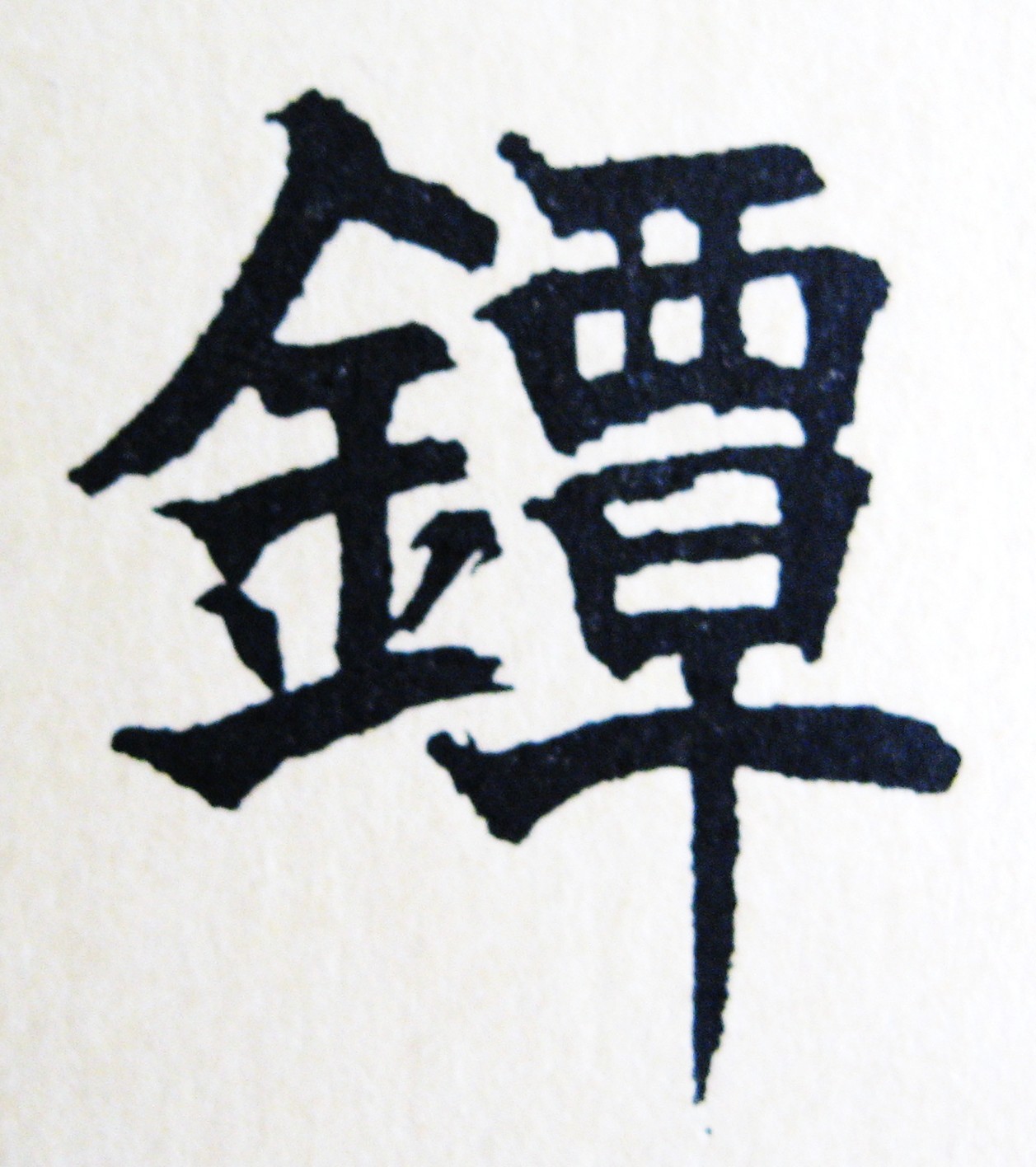|
'Yurakusai Sekibun'
|
 |
|
'Yurakusai Sekibun'
|
 |
| PROVENANCE: Robert E. Haynes Elliott D. Long |
Collection Tsuba, Please Inquire elliott@shibuiswords.com |
|
"Oval shakudo plate with a deep blue hue. The face with the legend of Choryo and Koseki, at the time Choryo was retrieving the shoe of Koseki from the river inhabited by a dragon. Koseki is on horseback, top left and Choryo is bottom right, with a gold shoe in hand, beside the dragon (read the legend HERE). The inlay is of copper, gold, and silver. The carving style and the subject remind one of the work of the Hamano school at this same time. The reverse of the plate has a water fall, clouds, rocks and plants in the river very boldly carved and inlaid in gold and silver. The face is signed on the right side of the seppa-dai: 'Yurakusai Sekibun', H 08118.0. This is the rather early work by the first Sekibun, born in 1790, and died in 1872. In 1790 he was adopted by the Hamano family of artists and was a student of that school until he went to Shonai in 1824. So it would seem that this tsuba was made by him before 1824, when he was still working with the Hamano family school. This just might be his earliest work so far recorded. For other examples of his work see: Nagaoka Tsuneyoshi: SHONAI KINKO NO KENKYU, Tokyo 1933. See illustrations number 149 to 170, almost all of these pieces were produced while Sekibun was living in Shonai. Also see: Sato Kanzan: SHONAI KINKO MEISAKU SHU, NBTHK Shonai Branch 1966, see numbers 216 to 270. Again the vast majority of these illustrations are of pieces that he made after he went to Shonai. There were three generations of the name Sekibun and the last two worked in Shonai. This example of the very early work of the first Sekibun is very rare and shows his great ability at a very early age." (Haynes) |
 |
|
7.0cm x 7.3cm x 0.42cm |
 |
 |
 |
 |
 |
 |
 |
 |
 |
The Aesthetics of 'Yurakusai Sekibun' |
The 'Sekibun' tsuba is explained not by its beauty or form, but by its effect on its audience or its creator. In this sense, it is many things: an escape from reality, an ideal, a source of pleasure and delight, instructive or educational, therapeutic, and a means of communication. |
| RETURN TO COLLECTION Go To Tsuba Gakko Email to Shibui Swords |